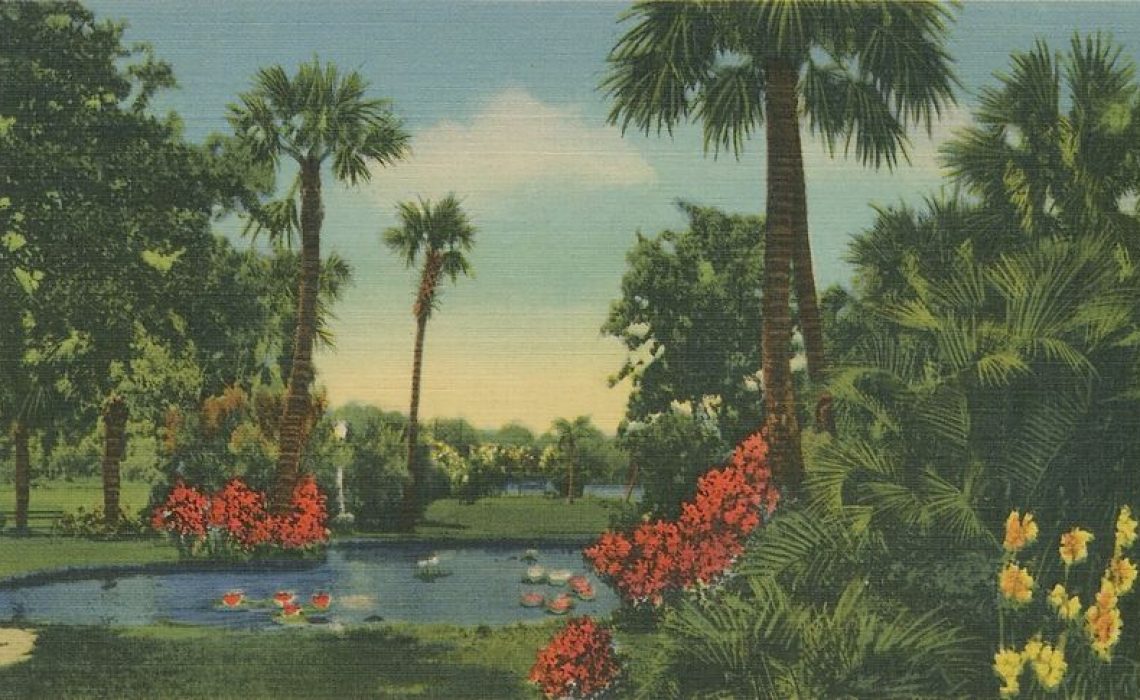
Orlando Land Trust’s Mission: Preserve Lake Eola, Park at City’s Heart
“Lake Eola always has been a hub around which Orlando has been built,” Eve Bacon wrote in her history of Orlando.
That’s sure the feeling of the folks who last fall founded the Orlando Land Trust, the mission of which is “to preserve, protect, and expand Lake Eola Park and the surrounding green space of Orlando’s ‘crown jewel’ by reducing development and density on the lake.” (See orlandolandtrust.org.)
The trustees of the group include former Orlando mayors Bill Frederick and Glenda Hood. Ted Haddock, executive director of the Haddock Family Foundation, is chairman.
Jake’s Lake
There likely would not have been a Lake Eola Park — or perhaps even an Orlando as we know it — without Jacob Summerlin, aka the “Cattle King of Florida,” who settled with his family near the lake in 1873, a few years after the Civil War.
Before the war, the area around the lake was cow country. In 1857, a former soldier named Robert Ivey homesteaded 640 acres near the lake, which his cattle used as a watering hole.
Lake Eola was spring-fed in the early days, and it was the custom for people to “row out to a point about 100 feet from the shoreline, sink a jug, pull the stopper, and let the jug fill with spring water,” Bacon wrote. Hard to imagine that today.
In the 1870s, when Summerlin arrived, he bought a bunch of land that included 200 acres around the lake and all of the lake itself, a tract for which he reportedly paid 25 cents an acre — a sum that would buy a few seconds of rent on the same land today.
In 1883, Summerlin donated to the city a strip of land around the lake to be beautified for public use, thus starting Lake Eola Park.
Folks apparently swam in the lake in Summerlin’s time, and his guests must have dressed for their dips in style. In 1884, the Orange County Reporter noted that Summerlin was building a “spacious bathhouse … in Lake Eola just opposite his fine residence.”
A girl named Eola?
According to old Orlando lore, Jacob Summerlin’s sons, Robert and Samuel, gave the name Eola to what had previously been called just “the lake.” Folks also called it Sandy Beach, after a stretch of sand that would appear along the east end during dry weather.
According to the story as Bacon tells it, the Summerlin brothers were chatting one day about what the lake should be called, and Sam suggested Eola, the name of a girl they both knew. When Sam was later asked more about the lady, he said he just didn’t recall.
So, the lake’s vowel-packed name bears a trace of mystery. There is an Eola, Texas, population about 200. According to the Texas State Historical Association, that Eola was inspired by “a small local creek named for Aeolus, Greek god of the winds.”
Maybe wind does have something to do with it. If you’ve ever perched after nightfall on the band-shell seats at the west end of our Eola, you can imagine a link to breezy spirits.
The goals of the Orlando Land Trust’s founders remain solid, though, and aimed at preserving green space near Lake Eola Park.
Working with Haddock, lifelong Orlandoans Lynn Long and Eugenia Sefcik created the trust with the aim of buying a roughly 5,000-square-foot parcel on the corner of Rosalind Avenue and East Central Boulevard that’s currently home to a 7-Eleven store. Their plan is to donate the land to the city with a deed restriction that it could only be used for public park space.
When Long and Sefcik saw the prospect of development encroaching on the park a few years ago, “we thought, ‘we need to do something about it,’ ” Long told the Sentinel in October, adding that Lake Eola “is the heart and soul of our community.” On that, she’s certainly got history on her side.
Read Article at Orlando Sentinel!
Joy Wallace Dickinson can be reached at [email protected], FindingJoyinFlorida.com, or by good old-fashioned letter at the Sentinel, 633 N. Orange Ave, Orlando, FL 32801.
